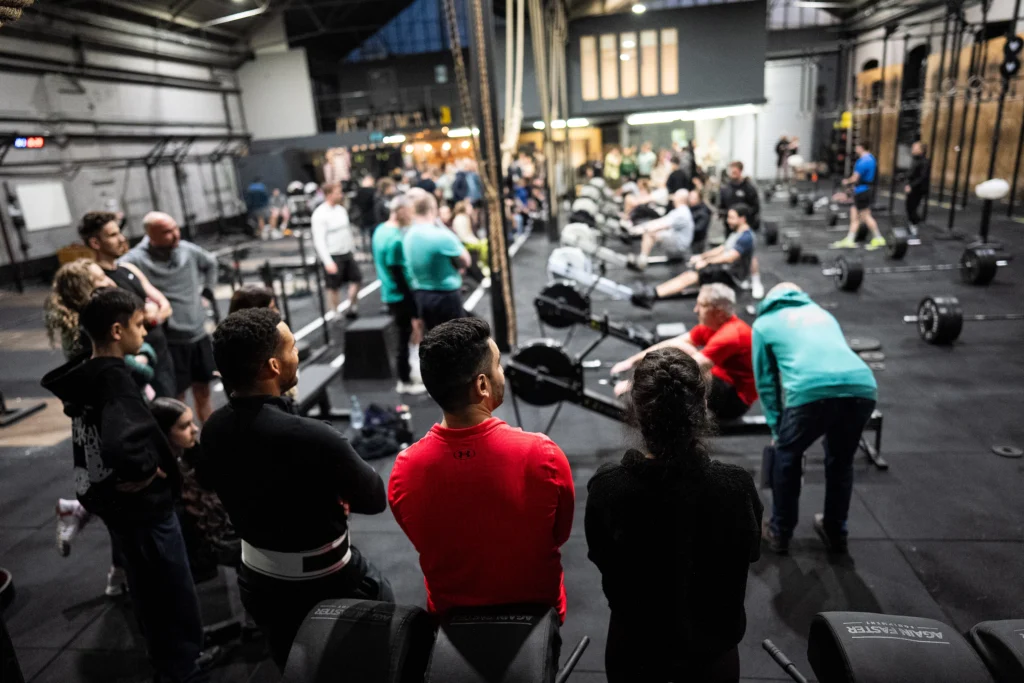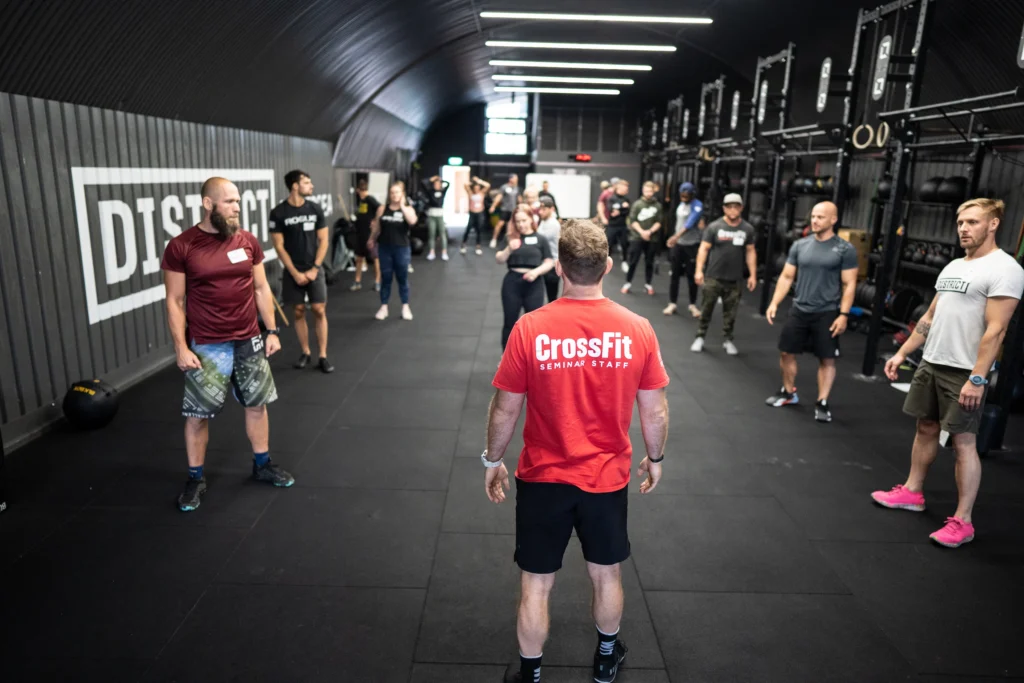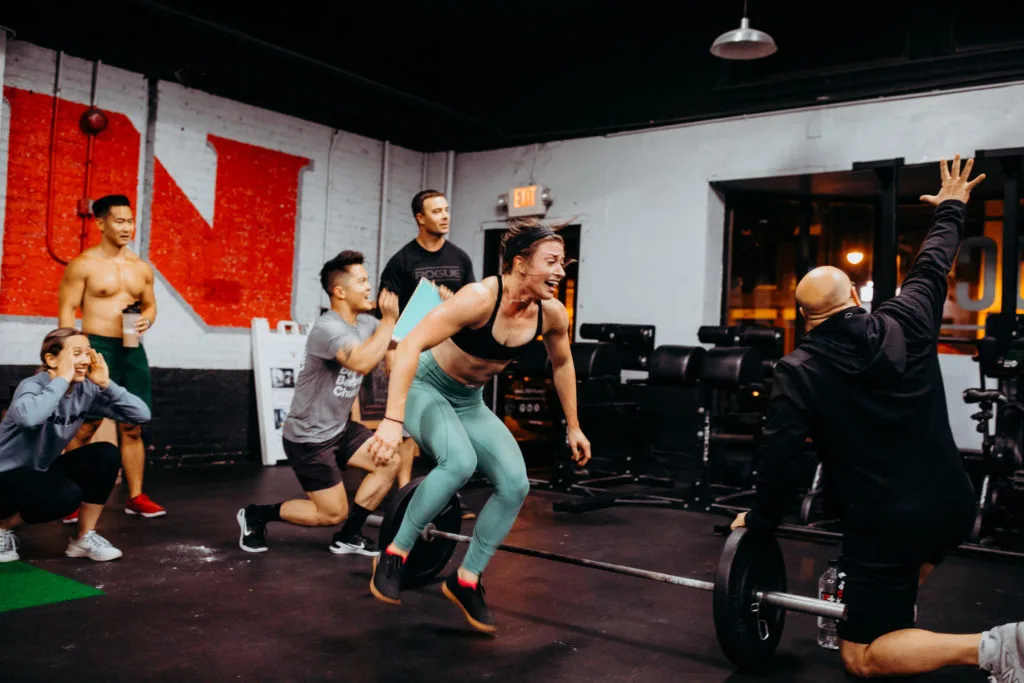The fitness brand believes health doesn’t happen in quick appointments but in shared struggles, daily efforts and earned resilience
“Community” is a buzzword. It’s surface-level. In simple terms, it means people are in the same place at the same time. That’s proximity, not power. CrossFit, the health, performance and sport brand, is more than a community; it’s a culture.
Culture isn’t about showing up — it’s about belonging. Culture is often referred to as the shared values, beliefs and practices that shape identity and bind people together. Military units have culture. Movements that change the course of history have culture. It’s earned, not branded.
The CrossFit culture does hard things together. Its methodology doesn’t hand out quick fixes; it rewards effort.
When CrossFit started, group exercise wasn’t new. Aerobics and spin studios were everywhere. However, the brand argues something happened when it started to gather in bare-bones warehouses all over the world. People weren’t just exercising in proximity; they were enduring hardship together. Out of that collective effort, something new and undeniable took form: a culture where doing the hard things together became a powerful health intervention.
The Health Trifecta
CrossFit argues the U.S. health system is collapsing under its own weight, not from lack of money or technology, but because it was built for disease management, not health. It’s bloated with paperwork, fractured by silos and can’t support the full human experience. Chronic disease rates are skyrocketing and primary care is hemorrhaging while patients get shuffled from one specialist to another. In that process, prevention gets buried.
That’s where CrossFit steps in with a raw, uncompromising message.
“We’re not ‘just fitness,’” said Jennifer Pishko, co-founder of the CrossFit Medical Society, a team of physicians and healthcare professionals who recognize the crucial role of lifestyle in fostering true health. “We’re grassroots health care happening in real time.”
CrossFit’s affiliate model, which the brand utilizes to expand, isn’t theory — it’s the biopsychosocial model in action. It’s a physical, psychological and social health solution without the bureaucracy.

Public health figures talk about “paradigm shifts” and moving upstream to address the social determinants of health through connection, accountability, nutrition and movement. But it’s stuck in policy papers and campaigns that never reach the street.
However, CrossFit is that paradigm shift. Its gyms are leading a charge where prevention becomes a reality.
“We train strength, stamina, flexibility, power, speed, coordination, agility, balance, accuracy and endurance,” Pishko said. “We drive up VO₂ max and fortify bone density. We sharpen metabolic health, cardiovascular fitness, and body composition through grit and effort.”
The brand improves biomarkers linked to chronic disease, decrepitude and cognitive decline as well. These neurological adaptations, sparked through the physical demand of complex and compound movements, also reinforce the brand’s methodology. The psychological discomfort in those final few seconds of a workout does more than build a mental callus. It transforms how you face challenges in every area of your life. Resilience is the capacity to adapt successfully to acute stress, trauma or chronic adversity. Then, physical fitness builds a buffer against stress-related disorders and age-related decline, reinforcing long-term health and adaptability.
The shared suffering that happens in CrossFit affiliates builds bonds deeper than surface-level friendships ever could. Military units, first responders and sports teams have always known that nothing binds people faster than facing hardship side-by-side.
“Society is suffering from loneliness and isolation, driving higher rates of depression, cognitive decline, heart disease, stroke, relapse and chronic illness,” Pishko said. “The prescription is meaningful connection and a sense of belonging, and it’s filled in the CrossFit gym.”
Culture Over Clinic
CrossFit argues the healthcare system was never designed to cure chronic disease, only to manage it, mediate it and profit from it.
“Pills and protocols keep symptoms at bay, but don’t address the root cause,” Pishko said. “To bend the curve, we must change the habit, and that can’t be done in a 15-minute appointment.”
Transformative disease prevention and reversal require daily behaviors reshaped over time, inside an environment that demands consistency and accountability while delivering support.

In CrossFit, behavior change is engineered through a loop involving cue, action and reward. Class times and familiar faces serve as cues; this type of environmental trigger bypasses hesitation and draws people in. The workout, scaled to capacity, is the action. It’s the proving ground where effort meets adaptation. Then, when it’s over, the reward hits, as dopamine drives motivation, serotonin stabilizes mood and oxytocin bonds people together. This loop hardwires new habits and makes members stick. The affiliate becomes a true hub of transformation, where lifestyle change is created and maintained.
The CrossFit methodology is also more than a daily workout. It outlines a simple yet profound nutrition strategy: eat meat and vegetables, nuts and seeds, some fruit, little starch, and no sugar. The habit change that starts inside the gym inevitably spills into life outside it — what you eat, how you recover, how you manage stress, how you connect with others.
“Surrounded by people aiming at the same target, habit change isn’t a lonely battle; it’s the outcome of being part of a culture that does hard things together,” Pishko added.
The Uncomfortable Truth
CrossFit argues our society is trapped in systemic dysfunction, chained by Big Food, Big Pharma and the medical industrial complex. Modern conveniences dull our instincts and quick fixes are sold as comfort. The brand believes loneliness has become a public health epidemic, deadlier than obesity and as destructive as smoking, and the truth is, the system cannot prescribe connection.

“Humans weren’t made to doom scroll and spectate,” Pishko said. “We were built to hunt in packs, to haul heavy loads and to defend one another through shared struggle. You see it in the moments when the workout is grueling, when the brain screams to stop, but the person beside you doesn’t quit, so neither do you.”
CrossFit aims to cultivate what society is losing: resilience, grit and culture rooted in collective effort. That’s what gives it the ability to offer what the healthcare system cannot.
“In CrossFit, you show up as you are, and over time, you become more than you thought possible,” Pishko said. “You carry that into work, relationships and adversity, because once you’ve pushed right through your own limits, you know you can face whatever life throws your way.”
That is CrossFit’s promise: not just fitness, but transformation. Not just a community, but a culture. Not just belonging, but becoming.



